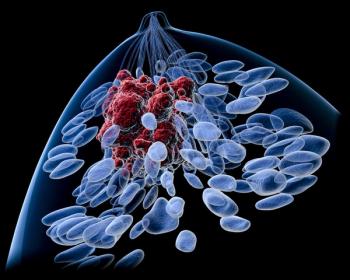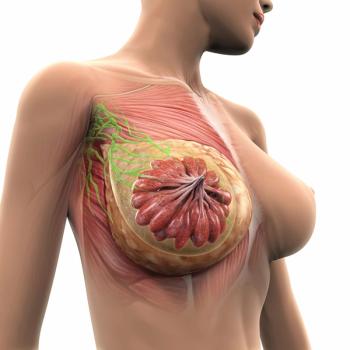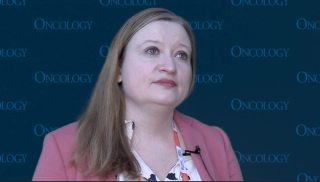
Breast Cancer
Latest News
Latest Videos

Podcasts
More News





Breast oncologist Jade E. Jones, MD, says she tries to send patients with HR-positive BRCA-mutant TNBC to clinical trials that use PARP inhibitors.

Following progression on a CDK4/6 inhibitor, ascertaining the endocrine sensitivity of HR-positive/HER2-negative disease may inform sequential treatment.


T-DXd improved progression-free survival over standard chemotherapy among patients with HR-positive breast cancer/triple-negative breast cancer in DESTINY-Breast04.

TPS 28 ELEGANT: Elacestrant VS Standard Endocrine Therapy in Women and Men With Node-Positive, Estrogen Receptor-Positive, HER2-Negative, Early Breast Cancer With High Risk of Recurrence in a Global, Multicenter, Randomized, Open-Label Phase 3 Study

30 Imlunestrant, an Oral Selective Estrogen Receptor Degrader, as Monotherapy and Combined With Abemaciclib, for Patients with ER+, HER2– Advanced Breast Cancer, Pretreated With Endocrine Therapy: Results of the Phase 3 EMBER-3 Trial



Data from the ELEVATE trial may support elacestrant as an endocrine therapy backbone in ER-positive, HER2-negative metastatic breast cancer.

“Higher pretreatment HER2 amplicon mRNA signature and HER2 protein expression predicted improved outcomes with T-DXd for [metastatic breast cancer],” Paolo Tarantino, MD, PhD, said.

Data from DESTINY-Breast09 may support trastuzumab deruxtecan plus pertuzumab as a frontline standard of care in HER2-positive advanced breast cancer.

Data from the phase 3 NATALEE trial confirms ribociclib plus NSAI consistently improves survival outcomes in stage II/III HR+/HER2– early breast cancer patients, regardless of age or menopausal status.

Data from the NeoSTAR trial showed no new safety signals with sacituzumab govitecan plus pembrolizumab for early-stage triple-negative breast cancer.

The use of chemotherapy trended toward improved recurrence-free intervals in older patients with high-risk tumors as determined via the MammaPrint assay.

Camizestrant and continued CDK4/6 inhibition delayed time to QOL deterioration vs SOC therapy in ER+/HER2– advanced breast cancer.

Patients who received ipatasertib/fulvestrant in the intention-to-treat population achieved a median PFS of 5.32 months compared with 1.94 months in the placebo arm.

In the phase 3 DESTINY-Breast06 trial, the overall biomarker-evaluable population’s confirmed ORR was 59.4% with T-DXd vs 33.9% with chemotherapy.

Across all 3 treatment arms, global health status/quality of life and functional domains were maintained in the phase 3 EMBER-3 trial.

Use of a pharmacist-directed resource appears to improve provider confidence and adverse effect monitoring for patients undergoing infusion therapy.

T-DXd rechallenge occurred after grade 1 ILD, and was proven safe for patients with breast cancer/solid tumors.

PFS was improved with first-line sacituzumab govitecan plus pembrolizumab for patients with PD-L1–positive metastatic TNBC.

































































































